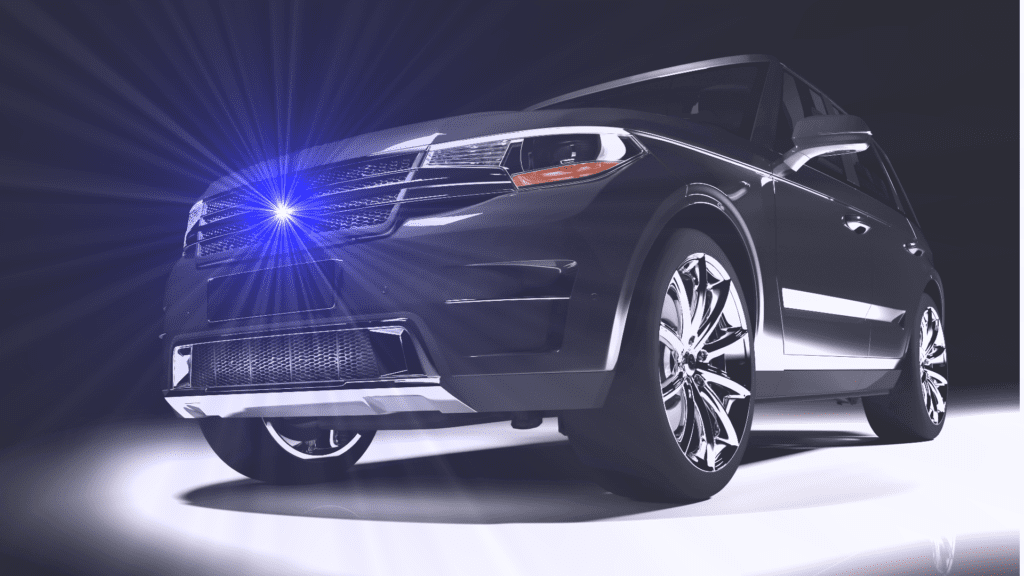Comparing Driver Visibility Between Various Vehicles.
Driver visibility is a critical factor in ensuring road safety, influencing not just the manoeuvrability of a vehicle but also the overall driving experience.
From subcompact cars to semi-trucks, the ability of a driver to see their surroundings clearly can make the difference between a smooth journey and a hazardous one.
Proper visibility allows drivers to anticipate and react to potential obstacles, pedestrians, and other vehicles, thereby reducing the likelihood of accidents.
The importance of driver visibility cannot be overstated. It affects how quickly and accurately a driver can respond to changing road conditions.
For instance, in subcompact cars, the smaller size and lower seating position can sometimes limit the driver’s field of vision, especially when navigating through dense traffic or tight spaces.
Conversely, semi-trucks, with their elevated cabs, offer a broader view of the road but come with their own set of visibility challenges, such as significant blind spots.
This article aims to provide a comprehensive analysis of driver visibility across a spectrum of vehicles, ranging from the smallest 2-door cars to the largest semi-trailers.
By examining the unique visibility features and challenges associated with each type of vehicle, I hope to shed light on the critical role that visibility plays in safe driving practices.
My objective is to equip readers with a better understanding of how different vehicles handle visibility issues, thereby empowering them to make informed decisions whether they are driving a subcompact car or a semi-truck.
Driver Visibility in Subcompact and Compact Cars.
Subcompact and compact cars, while popular for their fuel efficiency and ease of manoeuvrability, often present unique challenges regarding driver visibility.
The design features inherent to these vehicles, such as window size, pillar placement, and seat height, play a significant role in determining how well a driver can see their surroundings.
Typically, subcompact and compact cars have smaller windows compared to larger vehicles. This can sometimes limit the driver’s field of vision.
For instance, the window size in the Honda Fit and Toyota Yaris, both known for their compact frames, can restrict visibility to some extent. This is particularly noticeable when navigating through busy urban environments or merging on highways.
Pillar placement is another critical factor affecting visibility. The A-pillars, located on either side of the windshield, are essential for structural integrity but can create blind spots.
In models such as the Ford Fiesta and the Hyundai Accent, the thickness and placement of these pillars can obstruct the driver’s view, especially when making turns or approaching intersections.
Seat height also influences how much of the road a driver can see. In compact cars, the seating position tends to be lower to the ground compared to SUVs or trucks.
This lower vantage point can make it difficult for drivers to see over the hood of the car or gauge the distance to obstacles.
For example, drivers of the Mazda2 would likely comment that they have challenges in parking and navigating tight spaces due to the lower seat height.
Common visibility challenges in subcompact and compact cars include blind spots and limited rear visibility. Blind spots are areas around the vehicle that are not visible to the driver through the mirrors or windows.
These are often more pronounced in smaller cars, necessitating the use of additional aids such as blind-spot detection systems. Limited rear visibility, exacerbated by sloping rear windows and high trunk lines, is another issue.
Drivers of the Chevrolet Spark and Nissan Versa, for instance, frequently rely on rear-view cameras to assist with reversing and parking.
Overall, while subcompact and compact cars offer numerous advantages, driver visibility remains a critical consideration.
Understanding these design features and their impact on visibility can help drivers make informed decisions and adopt appropriate safety measures.
Driver Visibility with Mid-size and Full-size cars.
When it comes to visibility, mid-size and full-size cars offer a unique set of advantages and challenges compared to their subcompact and compact counterparts.
One of the most notable differences lies in the size of the windshield and windows. Mid-size and full-size cars generally feature larger windshields and side windows, which can significantly enhance the driver’s field of vision.
This increased glass area allows for better situational awareness, making it easier to spot other vehicles, pedestrians, and obstacles on the road.
Mirror placement is another critical factor in driver visibility. In mid-size and full-size cars, side mirrors are often positioned to provide a broader view of the vehicle’s surroundings. This can be particularly beneficial in reducing blind spots, which are a common issue in smaller cars.
Additionally, many modern mid-size and full-size cars are equipped with advanced mirror technologies, such as blind-spot monitoring systems, which further aid in enhancing driver awareness.
Seat height also plays a crucial role in visibility. Mid-size and full-size cars typically offer adjustable seating options that allow drivers to find an optimal driving position.
Higher seat heights can improve forward visibility by providing a clearer view over the hood and dashboard. This is especially important in urban driving conditions where quick decisions are often necessary.
In contrast, subcompact and compact cars, with their lower seating positions, may not offer the same level of visibility.
Popular models in the mid-size and full-size car categories, such as the Toyota Camry, Honda Accord, and Ford Fusion, exemplify these visibility characteristics.
These vehicles are designed with expansive windshields, strategically placed mirrors, and adjustable seat heights to ensure that drivers have a clear and unobstructed view of the road ahead.
Such features not only enhance safety but also contribute to a more comfortable and confident driving experience.
Overall, the design elements of mid-size and full-size cars make them well-suited for drivers who prioritise visibility.
Whether navigating busy city streets or cruising on the highway, these vehicles offer a balanced blend of features that contribute to a safer and more enjoyable driving experience.
Visibility in SUVs (Sport Utility Vehicles).
Driver visibility in SUVs, spanning compact, mid-size, and full-size categories, is significantly influenced by their elevated seating positions, larger windows, and overall vehicle dimensions.
The elevated seating position in SUVs provides a higher vantage point compared to sedans or hatchbacks, enhancing the driver’s field of vision and allowing for a clearer view of the road ahead.
This elevated perspective is particularly beneficial in traffic, as it allows for better anticipation of road conditions and potential hazards.
Large windows, a common feature in SUVs, contribute positively to visibility by reducing blind spots and allowing more light into the cabin.
However, the size and design of these windows can vary across different SUV categories. Compact SUVs, such as the Honda CR-V, typically offer good visibility due to their relatively smaller dimensions and straightforward design.
Mid-size SUVs like the Toyota Highlander strike a balance between window size and vehicle structure, offering decent visibility while accommodating additional features and passenger space.
Full-size SUVs, exemplified by models like the Chevrolet Tahoe, often have even larger windows, further improving the driver’s ability to see in all directions.
However, the increased size of these vehicles also introduces unique challenges. Thick pillars, necessary for structural integrity, can create substantial blind spots. The A-pillars, in particular, can obscure the driver’s view at intersections, while the C and D-pillars can hinder rear visibility.
To mitigate these visibility challenges, many modern SUVs are equipped with advanced features such as rear-view cameras and sensors.
These technologies assist drivers in manoeuvring and parking, compensating for the blind spots created by the vehicle’s design.
Rear-view cameras provide real-time visual feedback, while sensors alert drivers to obstacles that may not be visible through the windows or mirrors.
Overall, while SUVs offer enhanced visibility due to their design, it is essential for drivers to be aware of the specific challenges posed by each size category.
By leveraging built-in technological aids and practicing attentive driving, the visibility issues inherent in SUVs can be effectively managed.
Visibility in Pickup Trucks.
Pickup trucks, which range from compact to full-size variants, present unique visibility challenges and advantages.
The design elements of these vehicles significantly impact driver visibility, making it imperative to understand the nuances associated with each type.
In compact pickup trucks, the relatively smaller size and lower cab height can enhance visibility to some extent compared to larger models.
However, compact trucks still face limitations due to the truck bed extending from the rear, which can obstruct the view when reversing or changing lanes.
Common models in this category, such as the Ford Ranger and Toyota Tacoma, often incorporate advanced driver-assistance systems (ADAS) like rear-view cameras and blind-spot monitoring to mitigate these visibility challenges.
Mid-size pickup trucks, such as the Chevrolet Colorado and Nissan Frontier, offer a balance between compact and full-size trucks. The elevated seating position in these vehicles provides a commanding view of the road ahead, improving forward visibility.
Nonetheless, the extended cab design and larger truck bed can introduce significant blind spots, particularly around the rear and sides.
These trucks frequently rely on technology like 360-degree cameras and rear cross-traffic alerts to assist drivers in manoeuvring safely.
Full-size pickup trucks, including models like the Ford F-150 and Ram 1500, are characterized by their substantial size and elevated seating height.
While these features afford a broader, more comprehensive view of the road, they also exacerbate blind spots, especially around the rear corners.
The expansive truck bed and wide body make it difficult to gauge distances when performing tasks such as parking or towing.
Advanced visibility aids, including multi-angle cameras and large side mirrors, are essential in these vehicles to enhance driver awareness.
The pickup truck’s cab design, seating height, and truck bed length collectively influence visibility. Drivers must be particularly vigilant about blind spots, which are prevalent in all pickup truck categories.
Modern safety technologies have become indispensable in addressing these issues, ensuring that drivers can navigate safely despite the inherent challenges of pickup truck visibility.
Visibility in Vans and Delivery Trucks.
Visibility in vans and delivery trucks presents unique challenges and opportunities, given the variety of vehicle types within this category.
Minivans, cargo vans, passenger vans, box trucks, and delivery van trucks each offer different visibility features that impact driver awareness and safety.
Minivans, often used for family and small business purposes, typically offer excellent visibility owing to large windows and a relatively high seating position. The wide windshield and expansive side windows provide a broad field of view, making it easier for drivers to monitor their surroundings.
Rear visibility, however, can be compromised in models with fewer rear windows, necessitating the use of backup cameras.
Cargo vans, which are commonly utilized for transporting goods, present more significant visibility challenges. These vehicles often lack rear windows, severely limiting rearward visibility.
To counteract this, many modern cargo vans are equipped with backup cameras and sensors to assist drivers in avoiding obstacles while reversing.
Additionally, the cab height in cargo vans is generally elevated, providing a better vantage point for forward and side visibility.
Passenger vans, designed to transport multiple occupants, offer varied visibility features depending on the number and placement of windows.
While front and side visibility is typically robust due to large windows and high seating positions, rear visibility can be impaired if the rear is fully occupied or loaded with luggage.
Once again, technological solutions like rear-view cameras and parking sensors are invaluable in these scenarios.
Box trucks, used extensively in logistics and delivery, often present the most significant visibility issues. These trucks typically have solid rear walls with no windows, making rear visibility entirely dependent on technology.
Advanced systems like 360-degree cameras and proximity sensors are crucial for safe operation. The height of the cab in box trucks, while beneficial for forward and lateral visibility, necessitates careful monitoring of blind spots.
Overall, while vans and delivery trucks face distinct visibility challenges, modern technology plays a pivotal role in mitigating these issues.
Features like backup cameras, sensors, and high-mounted seating positions significantly enhance driver awareness, ensuring safer navigation and operation in various driving conditions.
Visibility in Large Trucks and Specialty Vehicles.
Large trucks and specialty vehicles, including utility trucks, straight trucks, dump trucks, semi-trucks (tractor-trailers), and cement mixers, present unique visibility challenges for drivers.
The high seating positions, coupled with extensive blind spots, necessitate the use of advanced visibility aids to ensure safe operation.
These vehicles often require additional mirrors and cutting-edge technology to mitigate the risks associated with their size and design.
One of the primary visibility issues in large trucks is the presence of substantial blind spots. These blind spots are often located around the front, sides, and rear of the vehicle, making it difficult for drivers to see other road users.
To address this, manufacturers have integrated a variety of mirrors such as wide-angle mirrors, convex mirrors, and fender mirrors. These mirrors help to expand the field of view, allowing drivers to better monitor their surroundings.
In addition to mirrors, modern technology plays a crucial role in enhancing visibility for large trucks and specialty vehicles.
Advanced Driver Assistance Systems (ADAS), including blind-spot detection, rear-view cameras, and surround-view systems, have become increasingly common.
These systems provide real-time information to drivers, alerting them to potential hazards and helping to prevent accidents.
For instance, blind-spot detection systems use sensors to monitor areas that are difficult for drivers to see, providing visual or auditory warnings if another vehicle is detected.
Different models of large trucks and specialty vehicles incorporate these visibility aids in various ways. For example, the latest semi-trucks are equipped with multiple cameras and radar systems that offer a comprehensive view of the vehicle’s surroundings.
Utility trucks and dump trucks often feature additional side mirrors and backup cameras to assist with manoeuvring in tight spaces.
Cement mixers, with their unique structure, benefit from enhanced rear-view cameras that provide a clear view behind the vehicle, essential for safe operation on construction sites.
Overall, the integration of additional mirrors and advanced technology is essential in addressing the visibility challenges posed by large trucks and specialty vehicles.
These measures not only enhance driver visibility but also contribute to safer roadways for all users.








